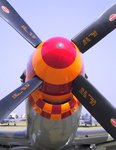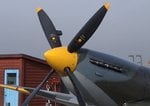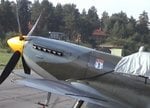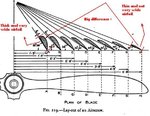- Thread starter
- #101
I know this Soren, but it still does not change the overall effect. Yes the prop has some twist to it, but the difference in overall angle of attack is not enough to equal out the difference in speed.
Wrong. Look at the picture below, it illustrates the airflow trough the prop.
Also, the inner part of the prop is of a somewhat laminar flow design, generating little or no airfoil lift - and it is thicker not to provide more lift, but rather for strength.
Look at your image - the inner two cross-sections have no lifting foil to them at all! And the inner 6 inches (assuming a 5' prop) or so is ROUND! 8)
No its not, I just presented a bad sketch then, heres a more illustrative one:
Btw if it was round, then it is quite common knowledge that airflow has no problem getting around a circular surface=Air pressure equal to "Free Airstream", but no thrust.
Also, if you're going to post a link, post one that goes somewhere meaningful, not just to the image you've arleady presented
I never posted that pic !
As for planes flying in 1803... no engines means no self powered planes - period.
Ever heard about the "bicycle", runs on the "Human" engine

















